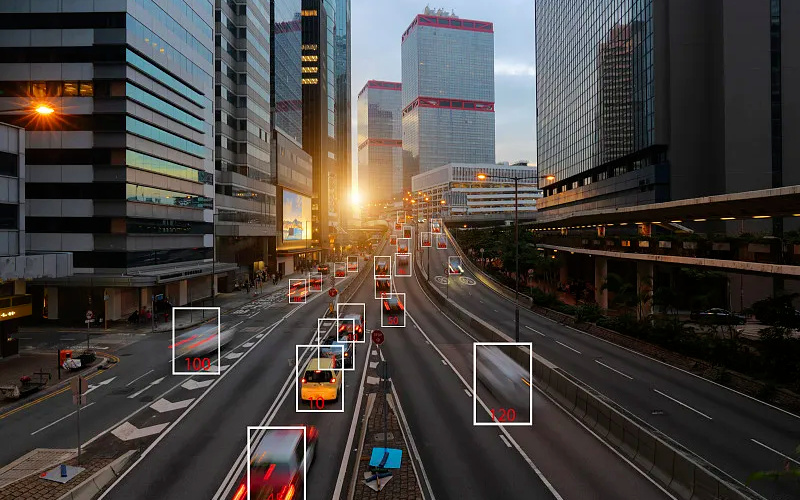Traffic Sensor Cameras: The Eyes on Our Roads Enhancing Safety and Efficiency

In our bustling cities and on our ever-expanding highways, managing traffic flow and ensuring safety is a constant challenge. Enter traffic sensor cameras – sophisticated electronic sentinels working tirelessly to monitor, analyze, and optimize the movement of vehicles and pedestrians. As leaders in providing advanced traffic sensing solutions, we understand the critical role these cameras play in creating smarter, safer transportation networks.
What Are Traffic Sensor Cameras?
Traffic sensor cameras are specialized imaging devices deployed at intersections, highways, toll plazas, and critical road sections. They go beyond simple surveillance; they are integrated sensors designed to automatically detect, track, and record traffic parameters. Unlike passive CCTV, these cameras often work in conjunction with other technologies, like radar sensors, to trigger specific actions based on real-time data.
Key Types of Traffic Sensor Cameras & Their Functions:
-
Speed Enforcement Cameras:
-
How They Work: Often paired with radar or LiDAR technology, these cameras detect vehicles exceeding the speed limit. When a speeding vehicle is identified by the radar, the camera captures images or video (typically showing the license plate and sometimes the driver).
-
Purpose: Deter speeding, reduce accidents, and enforce speed limits automatically. Commonly seen in high-risk areas like school zones or accident-prone stretches.
-
-
Red Light Cameras (RLR):
-
How They Work: Sensors (inductive loops in the pavement or radar) detect a vehicle entering an intersection after the traffic signal has turned red. The camera captures images/video of the vehicle committing the violation.
-
Purpose: Reduce dangerous red-light running, a major cause of severe T-bone collisions. Improves intersection safety for all road users.
-
-
Traffic Monitoring & Data Collection Cameras:
-
How They Work: These cameras continuously observe traffic flow. Advanced models use video analytics software to automatically count vehicles, classify types (car, truck, bus, bicycle, pedestrian), measure speeds (without enforcement), detect congestion, monitor queue lengths, and even identify incidents like stopped vehicles or accidents.
-
Purpose: Provide vital real-time data for traffic management centers (TMCs) to optimize signal timings, manage congestion, plan road improvements, and dispatch emergency services quickly. Essential for smart city initiatives.
-
-
Toll Enforcement & Automatic Number Plate Recognition (ANPR/ALPR) Cameras:
-
How They Work: High-resolution cameras capture license plate images at toll plazas or specific checkpoints. OCR (Optical Character Recognition) software reads the plate number for electronic toll collection (ETC) or enforcement against non-payment.
-
Purpose: Enable seamless tolling, reduce congestion at toll booths, and enforce toll regulations. Also used for security purposes like stolen vehicle identification.
-
Why Traffic Sensor Cameras Are Essential:
-
Enhanced Safety: Significantly reduce speeding and red-light violations, leading to fewer accidents, injuries, and fatalities.
-
Improved Traffic Flow: Real-time data allows for dynamic signal control, reducing congestion and travel times.
-
Efficient Enforcement: Automate traffic law enforcement, freeing up police resources for other duties and ensuring consistent application.
-
Valuable Data: Provide objective, continuous data for transportation planning, infrastructure investment decisions, and measuring the impact of traffic initiatives.
-
Incident Management: Enable rapid detection of accidents, breakdowns, or hazards, allowing for quicker response times.
-
Smart City Integration: Foundational technology for connected vehicle systems and intelligent transportation systems (ITS).
Beyond the Lens: Integration is Key
While powerful on their own, traffic sensor cameras achieve their full potential when integrated with complementary technologies:
-
Radar Sensors: Provide highly accurate speed and presence detection regardless of lighting or weather, triggering cameras reliably. Radar excels where visibility is poor.
-
Inductive Loops: Embedded in the pavement, detect metal vehicles for presence and count at intersections.
-
Communication Networks: Transmit data and images in real-time to central management systems.
-
Central Management Software: Processes data, generates reports, manages enforcement workflows, and controls connected systems.
Choosing the Right Traffic Sensing Solutions
Whether your need is for automated enforcement (speed, red-light), comprehensive traffic data collection, or incident detection, selecting the right combination of technologies is crucial. Factors include location, primary objective (safety vs. data vs. tolling), environmental conditions, required accuracy, and budget.
Partnering for Safer Roads
As a provider of cutting-edge traffic monitoring solutions, including radar sensors and traffic sensor cameras, we are committed to equipping traffic authorities, municipalities, and private operators with the tools they need. We offer:
-
Expert Consultation: Helping you define requirements and select the optimal technology mix.
-
High-Quality Equipment: Reliable, accurate radar and camera solutions from trusted manufacturers.
-
Integration Support: Ensuring seamless operation with existing or new systems.
-
Ongoing Service & Maintenance: Maximizing system uptime and performance.
Ready to See Your Traffic Solutions Clearly?
Traffic sensor cameras, especially when combined with robust radar detection, are indispensable for modern traffic management and safety programs. They provide the critical “eyes” that enable smarter decisions, faster responses, and ultimately, safer journeys for everyone.
